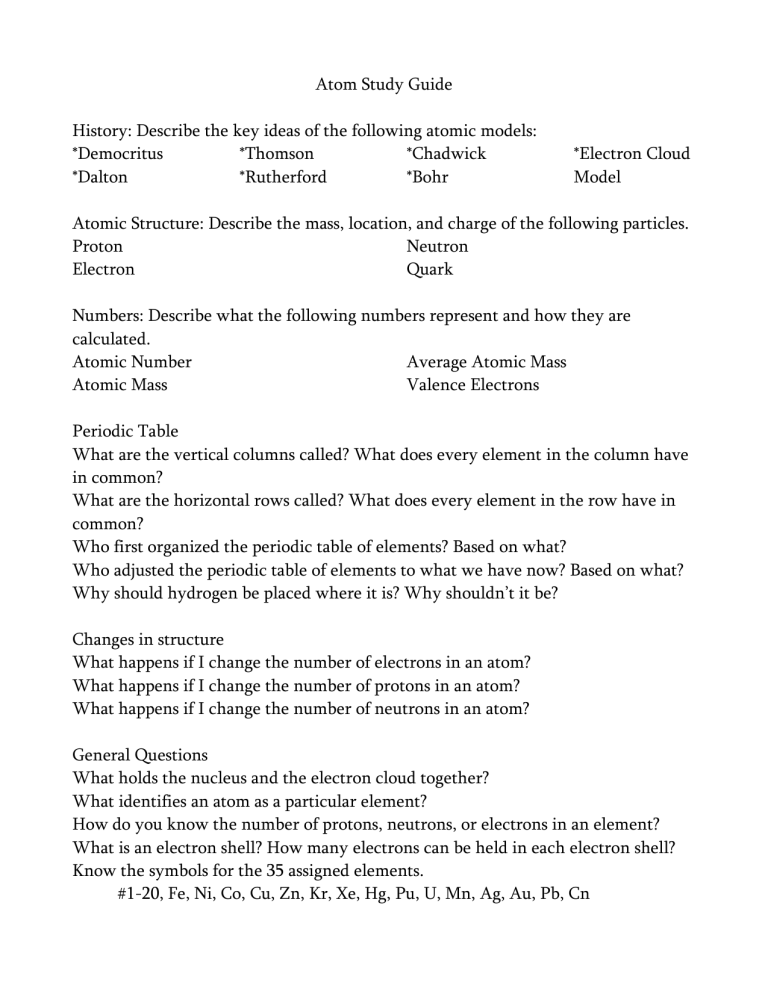
Atom Study Guide History: Describe the key ideas of the following atomic models: *Democritus *Thomson *Chadwick *Dalton *Rutherford *Bohr *Electron Cloud Model Atomic Structure: Describe the mass, location, and charge of the following particles. Proton Neutron Electron Quark Numbers: Describe what the following numbers represent and how they are calculated. Atomic Number Average Atomic Mass Atomic Mass Valence Electrons Periodic Table What are the vertical columns called? What does every element in the column have in common? What are the horizontal rows called? What does every element in the row have in common? Who first organized the periodic table of elements? Based on what? Who adjusted the periodic table of elements to what we have now? Based on what? Why should hydrogen be placed where it is? Why shouldn’t it be? Changes in structure What happens if I change the number of electrons in an atom? What happens if I change the number of protons in an atom? What happens if I change the number of neutrons in an atom? General Questions What holds the nucleus and the electron cloud together? What identifies an atom as a particular element? How do you know the number of protons, neutrons, or electrons in an element? What is an electron shell? How many electrons can be held in each electron shell? Know the symbols for the 35 assigned elements. #1-20, Fe, Ni, Co, Cu, Zn, Kr, Xe, Hg, Pu, U, Mn, Ag, Au, Pb, Cn 1. The element uranium has a mass number of 238 and an atomic number of 92. How many neutrons, protons, and electrons does an atom of uranium have? 2. What is the same in two isotopes of an element? What is different? 3. Draw and label two isotopes of carbon, carbon-12 and carbon-14. Carbon’s atomic number is 6. 4. The element magnesium has an average atomic mass of 24.305. What is the most common (most abundant) isotope of magnesium? 5. Draw an electron shell configuration for chlorine. How many valence electrons are present?


